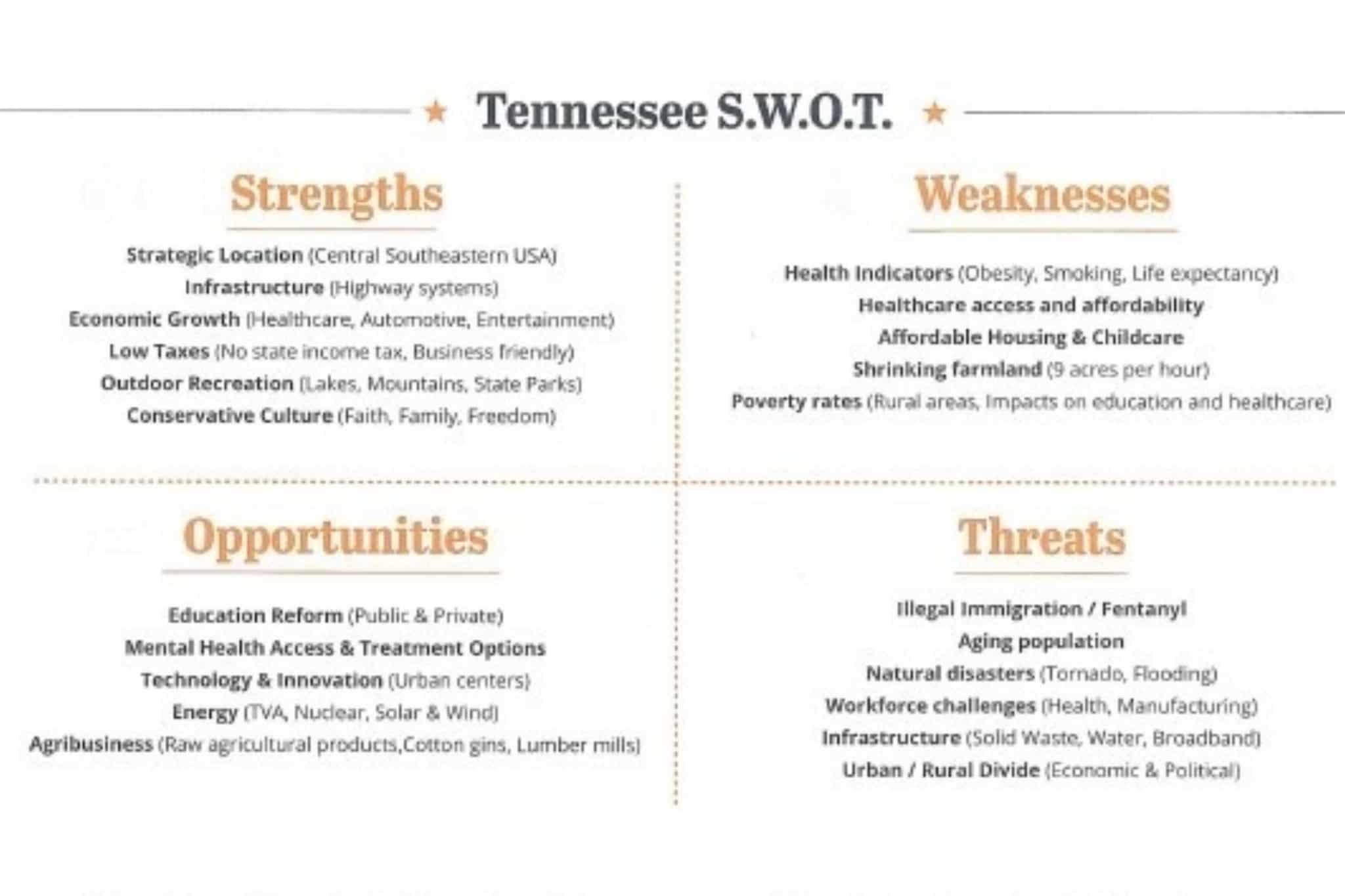When we think about state government, we often focus on policies, headlines, or elections—but behind the scenes, the real story is told in numbers. During a recent “Day on the Hill” visit with Senator Shane Reeves, they reviewed the Reeves Report, a detailed summary that explains where Tennessee’s tax dollars come from, how they’re spent, and what trends are shaping the state’s future.
Where Our Tax Dollars Come From
Tennessee relies heavily on consumer-driven revenue. Here’s a breakdown of where our tax dollars originate:
· 56% – Sales Tax
· 15% – Franchise and Excise Tax
· 7% – Insurance and Banking
· 5% – Gas Tax
· 2% – Motor Vehicle Registration
· 1% – Tobacco, Beer, and Alcohol
Surprisingly, vice taxes like those on tobacco and alcohol account for just 1% of the state’s income. Sales tax is by far the largest contributor, highlighting how closely our budget is tied to consumer spending.
Where the Money Goes
On the spending side, Tennessee’s budget shows strong commitments to core services:
· 37% – Education
· 30% – Health and Social Services
· 10% – Law, Safety, and Corrections
· 8% – Transportation
Together, these four areas account for 85% of the state budget, reflecting a clear focus on long-term investments in people and infrastructure.
A Weakness Identified: Shrinking Farmland
In addition to financial data, the Reeves Report includes a statewide SWOT analysis—identifying Tennessee’s strengths, weaknesses, opportunities, and threats. One major concern listed under “Weaknesses” is the rapid loss of farmland.
Farmland across Tennessee is being sold and developed at a steady pace. While this growth meets the demand for housing and commercial development, it also raises concerns about food security, environmental sustainability, and the loss of Tennessee’s rural heritage. In response, the
state and many municipalities are exploring ways to preserve agricultural land, including new zoning strategies, conservation incentives, and rural protection programs.
Why This Matters for the Future of Development
The focus on farmland preservation could impact future growth and land use across the state. Builders and developers may face:
· More restrictive zoning in agricultural areas
· Additional review processes before land can be converted for development
· Pressure to build more efficiently, using less land per home
· Community pushback against large-scale development in historically rural regions
At the same time, infrastructure spending—such as the 8% of the state budget allocated to transportation—signals continued investment in expanding roads and accessibility, which could open up new development corridors while reducing pressure on farmland.
—
Final Thoughts
The Reeves Report paints a compelling picture of where Tennessee stands today and where it’s heading. As tax dollars are invested in schools, healthcare, and infrastructure, and as policymakers grapple with how to balance growth and preservation, it’s clear that every Tennessean—whether a resident, business owner, or developer—has a role to play in shaping the future of our state.
DREAM. BUILD. LIVE. ENJOY.



